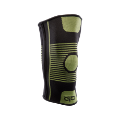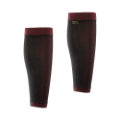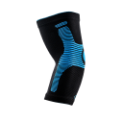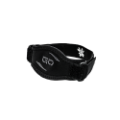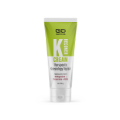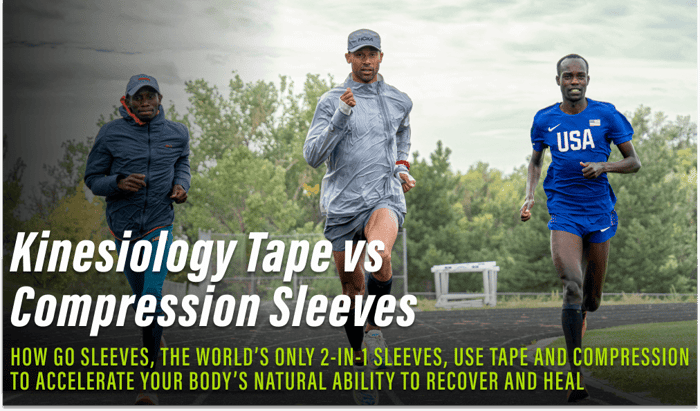Athletes have used kinesiology tape, or K tape, since it was invented in Japan during the 1970s as a pill-free way to manage pain and swelling while providing support to tendons, ligaments, and muscles. Despite these and more benefits, it is beneficial to assess the top 5 frustrations with kinesiology tape as well.
Unlike stiff athletic tape, which is designed to restrict movement, K tape’s flexible stickiness and stretchiness lifts skin away from the tissues while allowing nearly a full range of motion. Lifting of the skin tissue causes nerve receptors to alter their signals to the brain and allows better flow of healing fluids to injured areas.

When applied properly, kinesiology tape can relieve swelling and inflammation by decreasing pressure on an injury while increasing blood flow to promote the body’s natural healing.
Sounds great, right? Even though it’s used by elite athletes all the time, the 1970’s were a long time ago, and sports technology has come a long way since then.
Although kinesiology tape makes a lot of sense for helping recover from specific injuries, let’s look at the top 5 frustrations with kinesiology tape:
#1 - Never-ending cost
The top brands of kinesiology tape: KT Tape, OK Tape, TheraBrand, and RockTape typically cost between $9 to $15 dollars for a single 16-foot roll or $26 to $28 for shorter, highly water-resistant versions. Depending on the size of application and persistence of the injury, the cost of multiple rolls can add up quickly. It’s common to go through 2 rolls per month with frequent usage, which adds up to an average of $600 per year in kinesiology tape investments.

Compression sleeves require no training or skill to use. Just slide them on in seconds and go. However, it’s important to find that delicate balance between snug enough to provide adequate support while staying in place, yet not so tight that the sleeve is “strangling” your body.
#2 - May require professional help to apply
There are dozens of methods and techniques for applying K tape to injured joints and ligaments. Some are very complex, requiring multiple pieces of tape with intricate woven cuts and fanned strips stretched to just the right tension. A doctor, chiropractor or physical therapist may be required to apply the kinesiology tape in an effective pattern. While many athletes can properly learn these techniques, some joints are physically impossible to reach without the help of someone else’s hands and a session that can take up to 10-15 minutes.

#3 - Single use only and may come off during activity
K tape is designed to be somewhat water-resistant. Regular K tape can be worn in the shower or other moisture-rich environments to some degree of success. Unfortunately, after 3 to 5 days, it has to be removed and must be thrown in the trash after only one application. Even more frustrating is having K tape start to peel off due to sweat, strain, or rubbing while being active.

#4 - Bad for the planet
Because K tape is single use only all those rolls of tape eventually end up in a landfill. Most K tape products are made from cotton fibers containing elastic cores, so they are not compostable or biodegradable. Nutricare is an innovative Australian company offering a natural bamboo body tape that would at least allow the discarded tape to break down in landfills.
#5 - No compression
K tape does provide a certain degree of support to ligaments, but it’s not designed to have the stability and protection of a snugly fit compression sleeve. While you can wear a compression sleeve over K tape, the two technologies were not created to be worn together, and users frequently experience their K tape peeling off the skin underneath the compression sleeve during activity. 
GO Sleeves are super-lightweight, breathable, washable, cheaper, faster, and simpler than kinesiology tape products, and more effective than traditional compression sleeves. They can be worn during your activity AND they are the only sleeves that should always be used during recovery for pain relief and faster recovery. GO Sleeves currently offer knee sleeves, calf sleeves, and elbow sleeves. 

Josiah Middaugh is the Head of Performance Science at GO Sleeves. Middaugh has a Master’s Degree in Kinesiology, 20 years of experience working with athletes of all kinds, and a long list of multi-sport racing accomplishments.
Middaugh’s professional racing accomplishments:
2015 XTERRA World Champion
15-Time XTERRA USA National Champion
6-Time USSSA National Snowshoe Champion
4-Time Fat Bike World Champion
10-Time GoPro Mountain Games, Ultimate Mountain Challenge Champion
2-Time USAT Winter Triathlon National Champion
Middaugh’s favorite ways to use GO Sleeves are to accelerate recovery and to mitigate calf muscle and Achilles tendon tightness. Learn more about Josiah’s coaching practice for endurance athletes at middaughcoaching.com.
